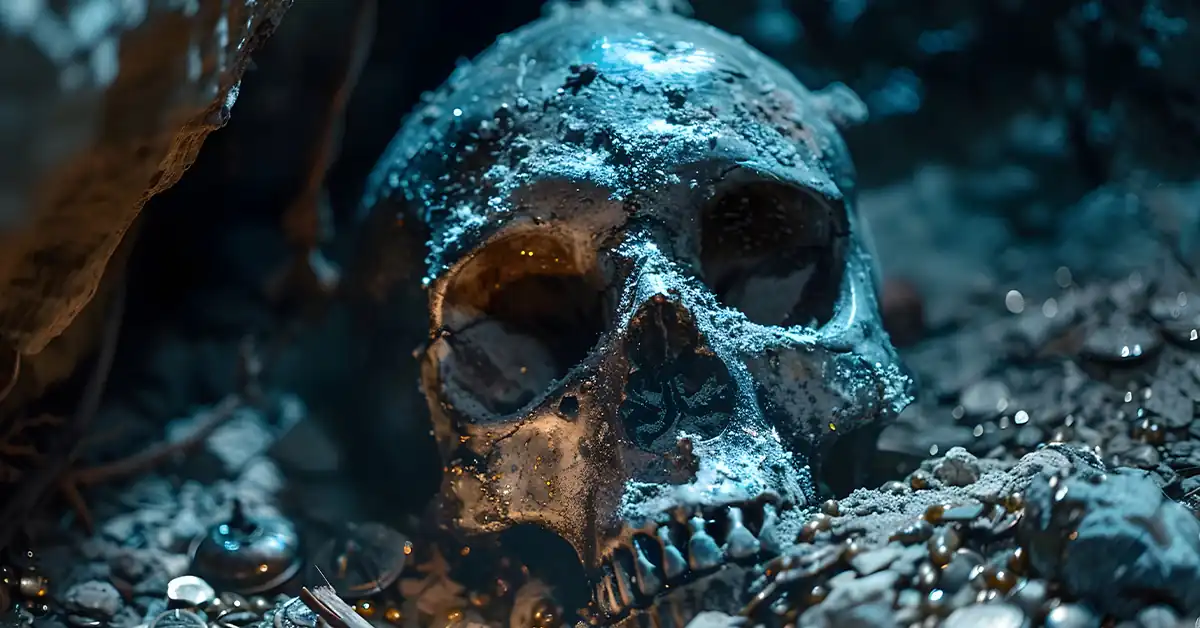What Is the Second Death in the Bible?

What Is the Second Death in the Bible?
Most Christians assume “the second death” refers to either annihilation or an eternal torture chamber. But neither view holds up under the weight of Scripture, or logic. In reality, the second death is part of a divine cycle. It’s not a dead-end, but a continuation of God’s redemptive process. In fact, what many assume to be a final destination may just be another phase in a larger pattern that stretches beyond the grave, and beyond our current understanding of time, space, and restoration.
The First Death Is Not What You Think
Contrary to popular belief, the first death is not just the physical moment you stop breathing. The Bible reveals it as something far more pervasive:
“You were dead in your trespasses and sins” (Ephesians 2:1)
“To be carnally minded is death” (Romans 8:6)
“She who lives in pleasure is dead while she lives” (1 Timothy 5:6)
This is death as a condition, not a one-time event.
We are born subject to death, shaped by futility, cursed with toil, and dominated by corruption. From the moment we enter the world, we are living a life of dying. Our bodies decay. Our souls are tormented. Our minds are carnally wired. This is the first death: a slow unraveling of purpose, peace, and connection to life itself.
And this isn’t incidental. God Himself subjected creation to this death for a purpose:
“The creation was subjected to frustration, not by its own choice, but by the will of the one who subjected it…” (Romans 8:20)
Why? To humble us. To break our pride. To prepare us for something more.
The Second Death Is Not Final, It’s Sequential
The term “second death” (Greek: deuteros thanatos) appears primarily in Revelation and always points post-resurrection:
“This is the second death, the lake of fire” (Revelation 20:14)
Here’s what most overlook: the Greek word “second” (deuteros) doesn’t just mean “number two.” It can also mean “afterward,” “again,” “subsequently.”
In other words, the “second death” may not be the last death. It’s the next death. A subsequent phase. A further purging. A deeper judgment. Not the end of existence, but the continuation of death for those who resisted the restoration of the first.
It’s not annihilation. It’s not eternal torture. It’s what happens when a soul still refuses the humbling fire of the first death, and must enter another.
Destruction Does Not Mean Annihilation
Consider the infamous ECT prooftext:
“They will be punished with everlasting destruction and shut out from the presence of the Lord” (2 Thessalonians 1:9)
The Greek word for “destruction” is ὄλεθρος (olethros), and its root meaning? Death. Not non-existence. Not ceasing. Not vaporization. Thayer’s and Strong’s both confirm this: it’s often translated as ruin, deadly, death, destruction, but never annihilation.
And here’s the kicker: the phrase literally links this destruction with separation from God’s presence.
Which means:
The second death is defined not by obliteration, but by alienation.
Cut off from life, glory, presence, hope, joy, healing, this is death, in its truest biblical sense.
Cycles, Not Curtains
Western Christianity has viewed judgment as final, binary, and terminal. But Scripture presents a recurring pattern of:
- Death → Judgment → Mercy
- Exile → Fire → Restoration
- Fall → Humbling → Return
Even Revelation, the most “final” of books, ends in open gates and ongoing healing:
“On each side of the river stood the tree of life… and the leaves of the tree are for the healing of the nations” (Revelation 22:2)
“Its gates will never be shut” (Revelation 21:25)
“Outside are the dogs…” (Revelation 22:15)
The city is built. The Bride is revealed. But people are still entering in.
So the second death?
It’s not the finish line.
It’s a fire at the edge of the city, not a wall at the edge of existence.
We See the Lake of Fire Now
The Lake of Fire is not merely a future state, it’s a present reality for many.
Look around. Scroll through social media. Watch the way people suffer. The abuse. The shame. The torment of mind. The despair of soul. The internal hell people live in, that’s the fire.
Many are already burning in the consequences of their own sin. Already tasting death while breathing. Already separated from peace, from joy, from hope.
So what is the second death?
It is what awaits those who die physically, still enslaved to the condition they never escaped in this life. But even then, the fire doesn’t destroy, it exposes. It reveals. It burns away illusion. Until all that remains is what can be redeemed.
What About “It Is Appointed Once to Die”?
“It is appointed unto man once to die, and after this the judgment” (Hebrews 9:27)
This doesn’t restrict God, it describes the human condition.
Yes, we all die once physically. That’s not a rule against further death, it’s a statement of the mortal pattern.
But Scripture makes clear: death can happen again. Souls can die. Minds can die. Nations can die. And God can raise them all.
Death Is the Last Enemy, Not the People in It
“The last enemy to be destroyed is death” (1 Corinthians 15:26)
Not souls. Not people. Not nations.
Death itself is the enemy.
So if God is committed to destroying death, not people, then the second death must eventually be undone, just like the first was conquered by Christ.
What If There’s a Third Death? Or a Fourth?
Revelation only calls it the “second death” because it follows the first.
But God’s redemptive fire is not bound by human numbering.
If a soul still resists, still clings to pride, still rejects the light, it may walk through another fire.
Death, then judgment. Again. And again. Until death is gone.
This is not reincarnation. This is not endless suffering. This is the mercy of divine iteration.
God doesn’t throw people away. He throws death into the fire.
In the End, All Things Are Made New
“Behold, I make all things new” (Revelation 21:5)
Not some things.
All things.
Not instantly.
But faithfully.
Even if it takes age after age, death after death, cycle after cycle, love never fails.
Conclusion
The second death is not the end. It is not torment for torment’s sake. It is not annihilation. It is a continuation of the first death, for those who never found life. It is the consequence of estrangement, the fire of exposure, the crucible of correction.
But even there, God is not done.
Because death is the enemy.
And love is eternal.
And the gates are still open.
- 08/27/2025
- WRITE A COMMENT
Recent Posts
- The Eternal False Translation: How Aionios Was Corrupted Into Eternal
- The Rich Man and Lazarus
- Does Grace Last Forever?
- His Love Never Fails
- Love and Forgive Your Enemies
- His Mercy Endures Forever
- Scriptures That Teach Universal Reconciliation
- The Lesson of James, Peter and John
- Progressive Salvation is Biblical!
- The Gates Never Shut!


